Flags of Countries in Africa
Egypt
The colors red, white and black are the pan-Arab colors. They express the togetherness of the Arab countries. But red also stands for the revolution in Egypt of 1952, white stands for the future and black reminds of the difficult past. The eagle in the middle of the flag symbolizes the first sultan of Egypt in the 12th century. His name was Saladin.

Algeria
Algeria’s flag consists of a green and a white field. Green stands for Islam and white for purity and peace. In the middle there is a red crescent moon and a red five-pointed star. They too are symbols of Islam.

Angola
The flag of Angola is based on the flag of the Angolan Liberation Movement. This carried a red and black flag with a yellow star. Red now stands for the fight or the blood shed in the fight, black stands for Africa and gold refers to the country’s great wealth. The machete stands for the farmers and the cog wheel for the workers. The star reminds of progress and internationalism.

Equatorial Guinea
The flag consists of three horizontal stripes in green, white and red. A blue triangle protrudes from the left. The colors symbolize nature (green), peace (white), struggle for independence (red) and water (blue). The country’s coat of arms is on the white stripe: a mangrove tree and six gold stars.
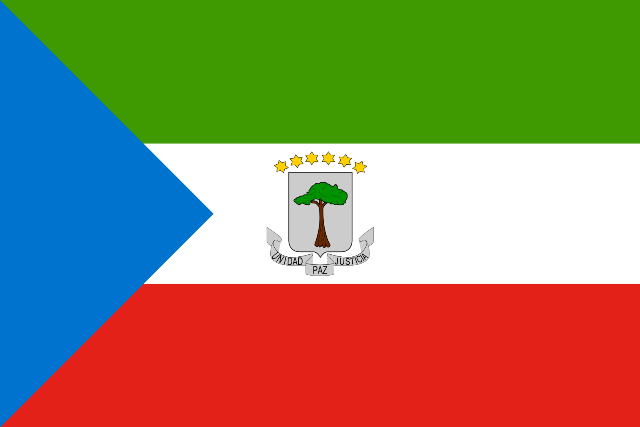
Ethiopia
The colors green, yellow and red are the colors of Africa. The five-pointed star in the middle of the flag represents the unity of the different population groups in the country. The lines symbolize the equality of people and the blue stands for peace.
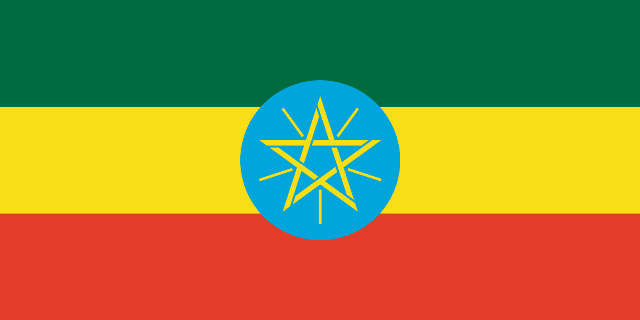
Benin
The colors red, yellow and green stand for a united Africa and the solidarity of all black people. They are therefore also called the pan-African colors (pan means “everything, whole, whole”). In general, green stands for hope, yellow for prosperity and red for courage. In relation to Benin, however, green also stands for the green south, yellow for the dry north and red for the blood that was shed for independence.
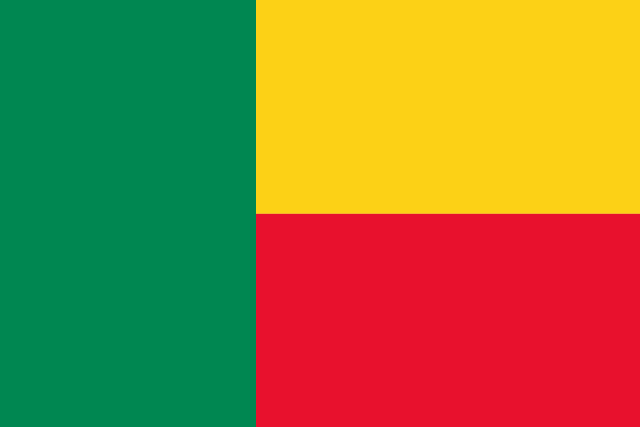
Botswana
The flag of Botswana is light blue. A wide black line in the middle is framed by two narrow white lines. Blue is not only the sky, but also the water. In Botswana, this means the rain, which is very important for life in this African country.

Burkina Faso
The flag of Burkina Faso is red above and green below. In the middle there is a yellow star. Green, yellow and red are the colors of Africa. They symbolize the togetherness of the peoples of Africa. That is why many African states have them in their flags. Green also stands for the nature and wealth of the country and red for the blood that was shed in the struggle for independence. The yellow star stands for the brilliant progress.

Burundi
Green symbolizes hope and white symbolizes peace – a peace that the country had to wait a long time for. Red commemorates the victims of the War of Independence. The three stars stand for the three ethnic groups of Hutu, Tutsi and Twa.

Djibouti
Blue is the color of the lssa ethnic group and also stands for sky and sea. Green symbolizes the Afar ethnic group and Islam . White stands for peace. The red star stands for the struggle for the country’s independence. The white triangle stands for the national motto “Unity, Equality, Peace”.
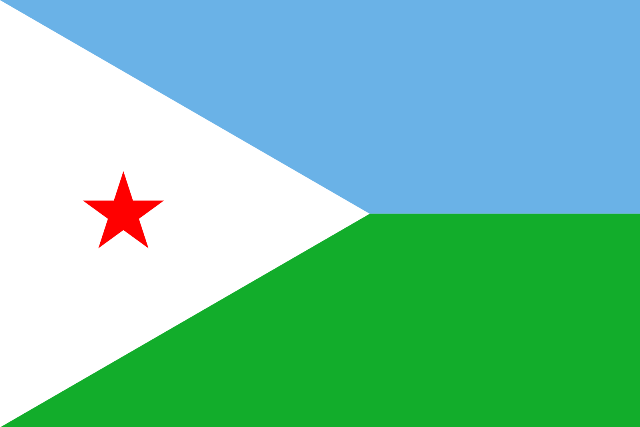
Ivory Coast
The flag is striped lengthways in the colors orange, white and green. It is interpreted as follows: orange stands for the savannahs in the north of the country and green for the forests in the south on the coast. White combines both. The model for the flag was the French tricolor. France was the colonial power until 1960.
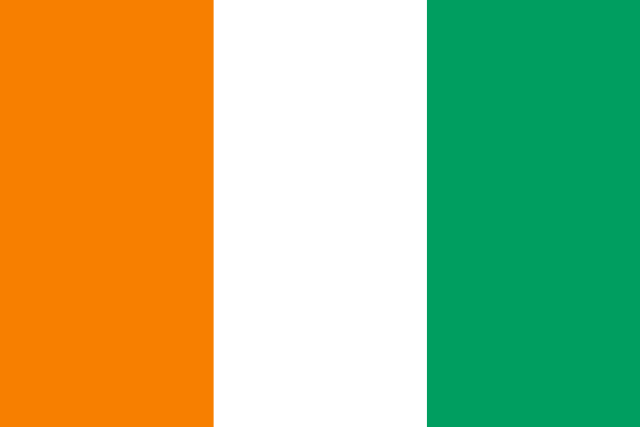
Eritrea
Green stands for the agriculture on which many people live, red for the blood spilled in the struggle for freedom and blue for the sea that borders Eritrea. The olive branches symbolize peace and growth. They can also be found in the flag of the United Nations.

Eswatini
Red stands for the blood that flowed in the battles, yellow stands for the country’s wealth in raw materials and blue for peace. In the middle you can see a Swazi battle shield with two lances. There is also a stick that is used as a fighting stick. Blue tufts of feathers adorn this royal emblem.

Gabon
The flag of Gabon is striped green, yellow and blue. Green stands for the forests, yellow for the sun and blue for the sea.

Gambia
The flag of Gambia has a red stripe that represents the future. The blue stripe symbolizes the Gambia River in the middle of the country. Nature and agriculture are green. The three colors are separated by two white narrow stripes. They stand for peace and unity.
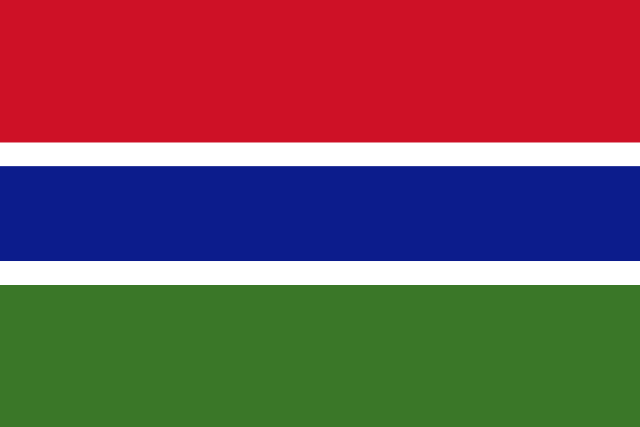
Ghana
The colors red, yellow and green stand for a united Africa and the solidarity of all people living here. In terms of Ghana, the green also stands for the lush forests, the yellow as gold for the country’s mineral resources and the red for the blood that the people shed for the struggle for freedom. The star in the middle symbolizes the fight against colonialism.

Guinea
The colors red, yellow and green stand for a united Africa and the solidarity of all people living here. They are called the pan-African colors. However, yellow also stands for the sun and gold, red for the struggle for independence and green for nature.
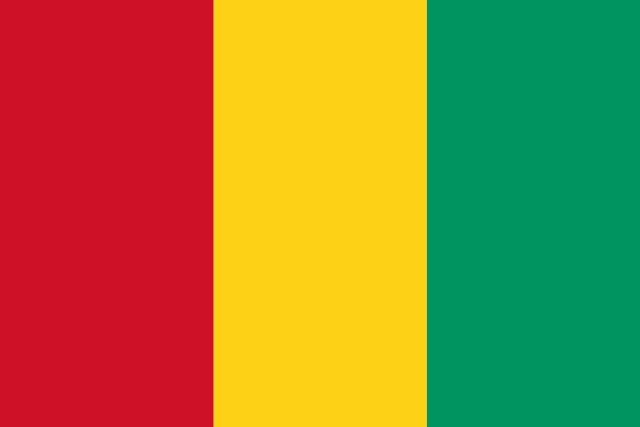
Guinea-Bissau
The colors red, yellow and green stand for a united Africa and the solidarity of all people living here. They are called the pan-African colors. But red also stands for the blood that people shed for the struggle for freedom, yellow for the harvest and green for nature. The black star is a symbol for Africa and its people, but also for peace and freedom.

Cameroon
The Pan-African colors red, yellow and green can be found in the Cameroon flag. They stand for a united Africa and the solidarity of all people living here. But yellow also stands for the sun and the savannah in the north. Red is a symbol for the struggle for independence and green for the lush nature in the south. The star connects the savannah and rainforest landscapes.
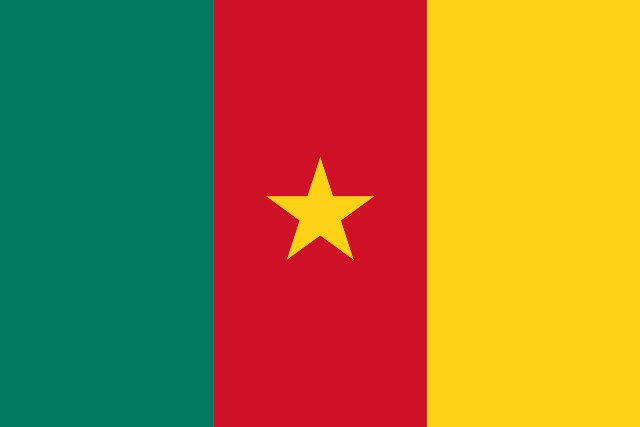
Cape Verde
The blue of the flag stands for the infinite sky and the sea. The ten stars represent the islands of the country. Their arrangement in a circle is intended to symbolize the unity of the nation. The white stripes stand for peace, the red stripe for hope. Together they are also a symbol of the way to build the country.

Kenya
The Kenyan flag has three horizontal stripes in black, red and green. They are interrupted by two narrow white stripes. Black stands for the black population and, above all, for their struggle for freedom. Red stands for the spilled blood and green symbolizes the forests and fields. White emphasizes unity and peace. In the middle of the flag is the Maasai shield with two spears crossed.
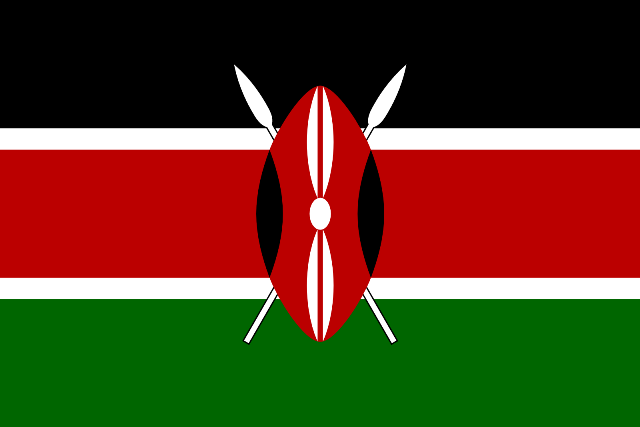
Comoros
The white crescent moon and the green color symbolize Islam , which is the state religion on the Comoros. The four stars stand for the four islands. This also means that the Comoros will continue to lay claim to the fourth island – Mayotte – which is still part of the French state. The four stripes also stand for the four islands. The new flag is from 2002.
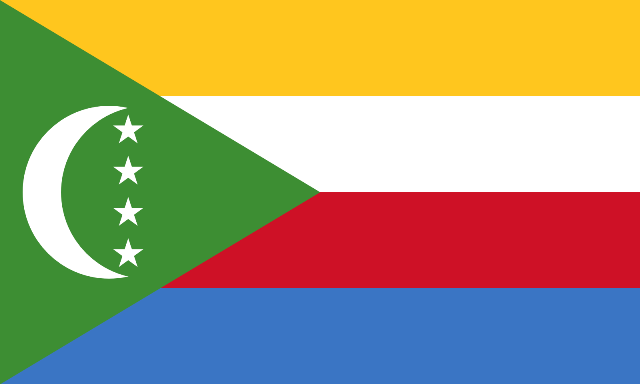
Congo, Democratic Republic
On a blue background, the flag shows a sloping red stripe framed in yellow. There’s a yellow star in the left corner. The blue is said to symbolize peace among the peoples of the country. Red represents the blood that was shed in the struggle for independence. Yellow stands for wealth. The star is a symbol of the unity of the country.
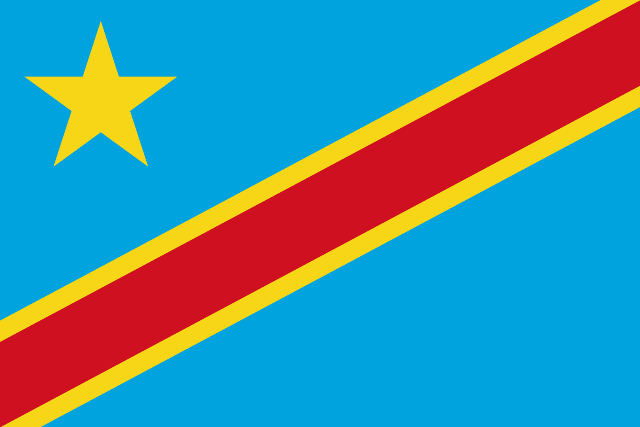
Congo, Republic
The flag of the Republic of the Congo is in the colors green, yellow and red, which are arranged in oblique stripes. These three colors also stand for a united Africa and were therefore chosen as national colors by many African countries. Green is a symbol for nature, yellow stands for mineral resources and red symbolizes the struggle for freedom.
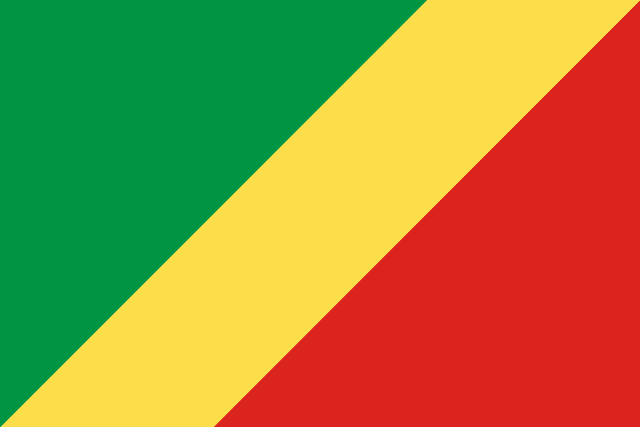
Lesotho
The current flag of Lesotho is still very young. It was only introduced in 2006. This was the 40th Independence Day. The flag is decorated with horizontal stripes in blue, white and green. In the middle is the mokorotlo, the traditional headgear in Lesotho. The previous national flag already had these colors, with white standing for peace, blue for rain and green for prosperity.
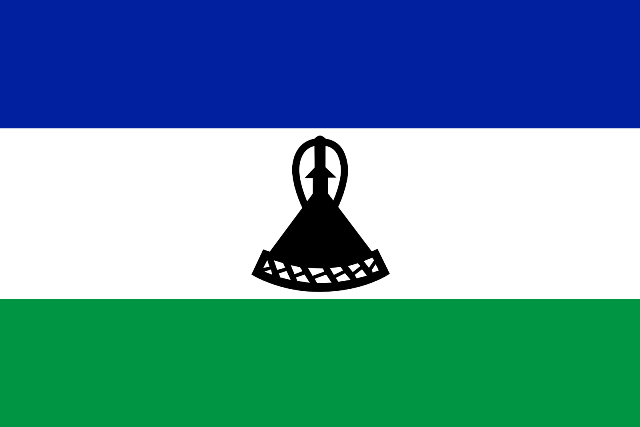
Liberia
The flag of Liberia with its white and red stripes and the white star is very reminiscent of the flag of the USA. There is a reason for that. Because Liberia was founded as an American colony for released slaves. Liberia gained independence as early as 1847. The eleven stripes represent the eleven signatories of the Declaration of Independence. The white star stands for the regained freedom, the blue square for the African homeland.

Libya
The flag of Libya is striped red, black and green, with the black stripe being twice as wide as the other two. The colors represent the traditional provinces of the country: red for Fessan, black for Cyrenaica and green for Tripolitania. At the same time, they have other meanings: red also stands for the blood in the fight against Italian colonialism, green for prosperity and black for the royal family. The flag has been in use since 2011.
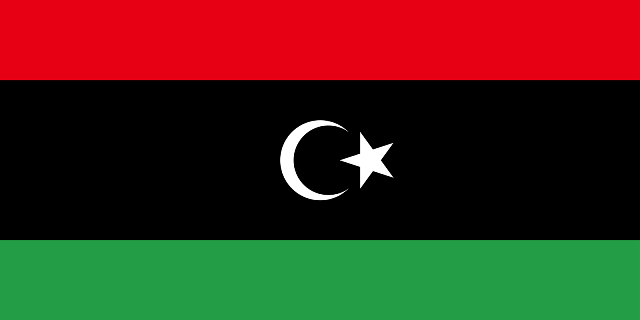
Madagascar
The basis of the flag of Madagascar are the colors white, red and green, with white standing for purity, red for the independence of the country and green for hope.
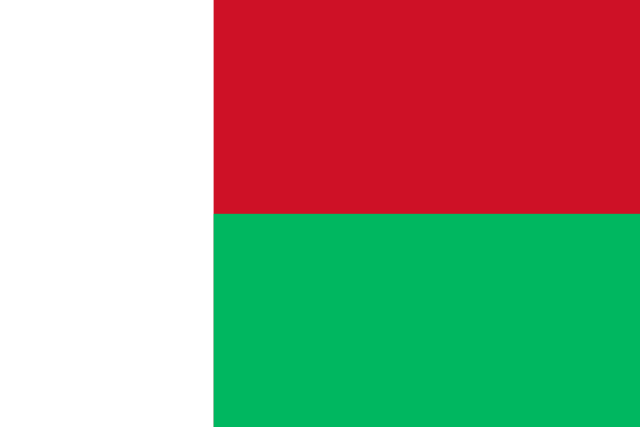
Malawi
The flag of Malawi has been around since the country gained independence in 1964. Black stands for Africa, red for the blood Malawi shed in the struggle for independence, and green for the fields and forests. The red sun stands for the hope of good development in the country.

Mali
Green, yellow and red are the colors of Africa. They symbolize the togetherness of the peoples of Africa. That is why many African states have them in their flags. Green also stands for nature, yellow for natural resources and red for the blood that was shed in the struggle for independence. The flag was introduced in 1961 after Mali became independent in 1960.

Morocco
The flag of Morocco is red. In the middle is a five-pointed star. This pentagram, as the five-pointed stars are also called, is the seal of Solomon. Red and green are often used in Arabic flags. Red is the color of the Sherif of Mecca, green that of Islam. The flag was introduced in 1915 and adopted with independence in 1956.

Mauritania
The flag is green with a yellow crescent moon and a yellow star above it. Both are symbols of Islam, the main religion in the country. Green and yellow also belong to the pan-African colors, they stand for a united Africa. Green also stands for hope, yellow for the country’s desert.
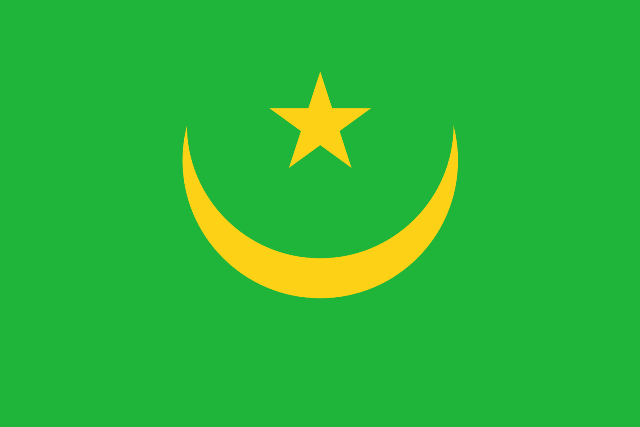
Mauritius
The red color stands for the independence of Mauritius, blue for the Indian Ocean. Yellow points to a bright future and green stands for the green landscape of the islands.
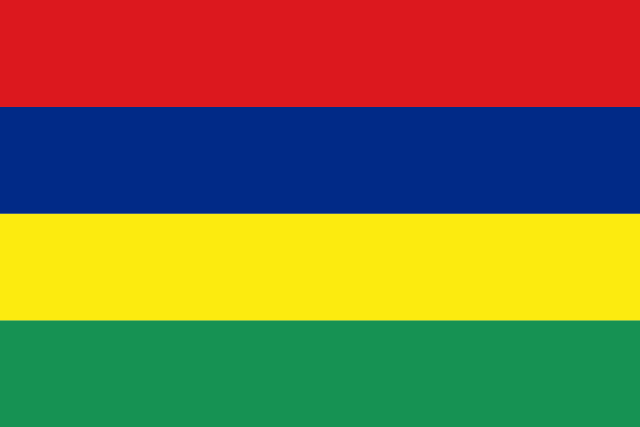
Mozambique
The flag was derived from the old flag of the freedom movement FRELIMO. Green stands for agriculture, black for the continent, yellow for ores of the country. White symbolizes peace and red the fight against the colonial states. The rifle stands for the defense of the land and the hoe for agriculture. The book corresponds to education.

Namibia
The sun in the top left of the flag is a symbol of life, but also of warmth and energy. The twelve rays stand for the twelve population groups in Namibia. Blue stands for the sky, the sea and the rain and green for the fertility of the land. The red color symbolizes the people who live in Namibia, and white stands for the peaceful coexistence of the people. The flag has been around since March 21, 1990, Namibia’s independence day.
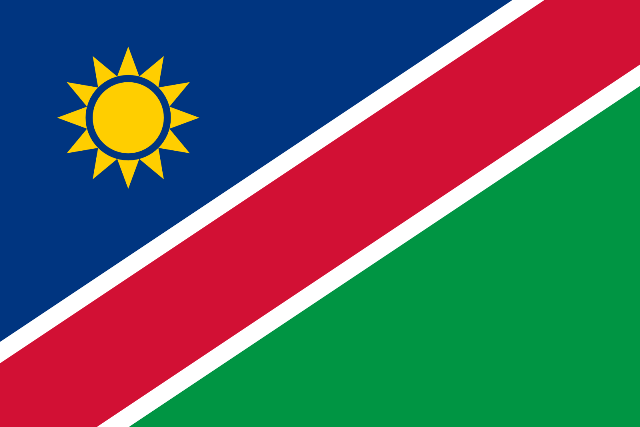
Niger
The flag of Niger has three stripes of orange, white, and green. Orange stands for the Sahara in the north and east, green for the grassy plains in the south and west (as well as hope) and white for innocence and purity. In the middle there is an orange sun. It stands for the willingness of the people of Niger to stand up for their rights.

Nigeria
The flag of Nigeria has three vertical stripes: the outer two are green and represent the country’s green landscape. The white in the middle represents peace and unity. It was adopted with independence in 1960.

Rwanda
The flag of Rwanda stands for the new beginning after the terrible civil war. Green stands for hope for wealth, yellow for the good economic development of the country and blue symbolizes happiness and peace. The sun stands for the light that shines on all people.
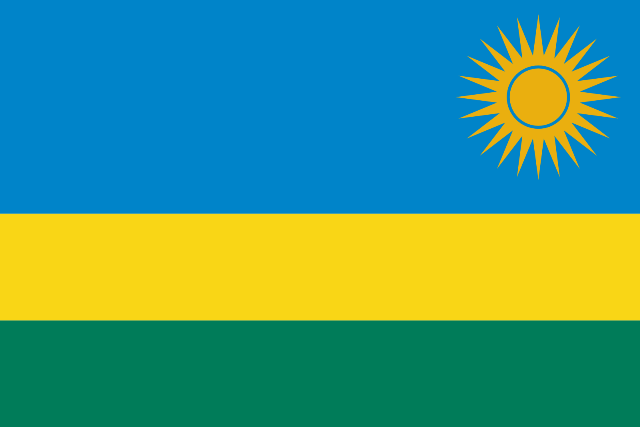
Zambia
The colors of the flag were chosen by the party that took power on the country’s Independence Day, October 24, 1964. It is called United National Independence Party , which translates as the “United National Independence Party”.
The green stands for the many forests in the country. The orange stands for the natural resources in Zambia, there are minerals like copper. Black is supposed to symbolize the skin color of the people in the country. The red represents the fight to independence.
Also, you might have noticed the bird on the flag. This is a fish eagle. He lives on the Zambezi, the river that gave the country its name. The animal is said to represent the nation’s pursuit of progress and also the ability to overcome problems in the country.
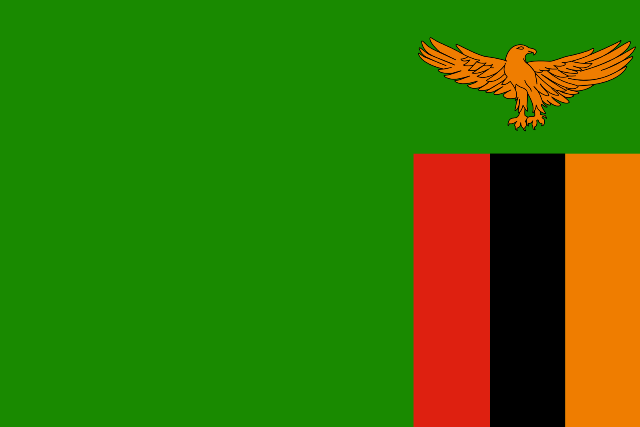
Sao Tome and Principe
The flag of São Tomé and Príncipe consists of two stripes in green, a middle yellow stripe and a red triangle. Green, yellow and red are the colors of Africa. They represent the togetherness of the peoples of Africa. That is why many African states have them in their flags. Green also stands for nature and red for the blood that was shed in the struggle for independence. Yellow is a symbol of the cocoa that is grown here. The two stars stand for the two islands in the country.

Senegal
Like many African countries, Senegal uses the pan-African colors green, yellow and red. They are supposed to express the unity of Africa. Green also stands for nature and hope, yellow for natural resources and red for the blood that was shed in the struggle for independence. The green star symbolizes freedom. The flag was introduced with independence in 1960.
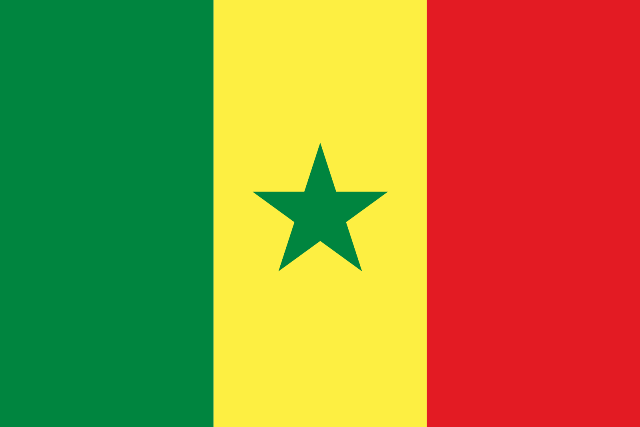
Seychelles
The flag is adorned with five diagonal stripes. They have the colors green, white, red, yellow and blue. Green stands for the forest and the plants, white for justice, red for the people who live in the Seychelles, yellow for the sun that shines over the islands of the Seychelles, and blue for the sky and sea.
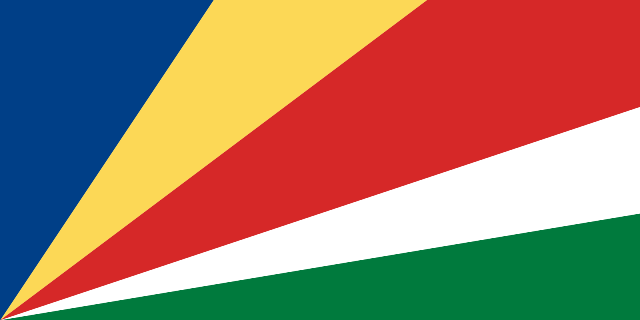
Sierra Leone
The flag of Sierra Leone has three stripes. They are green, white and blue. Green stands for nature, white for unity and justice and blue for hope.

Zimbabwe
The black color in the middle stripe of the flag of Zimbabwe stands for the African continent, the white triangle for peace and the red star for socialism. You can see the Zimbabwe bird in the coat of arms.

Somalia
Blue stands for the color of the United Nations, which also has a blue flag. They supported Somalia in the development of the country and that is why this color was included in the flag. The star stands for African freedom.

South Africa
The flag combines the colors of the African National Congress and those of the Boer Republic. This is supposed to symbolize the two skin colors – that of the black majority and that of the white minority.
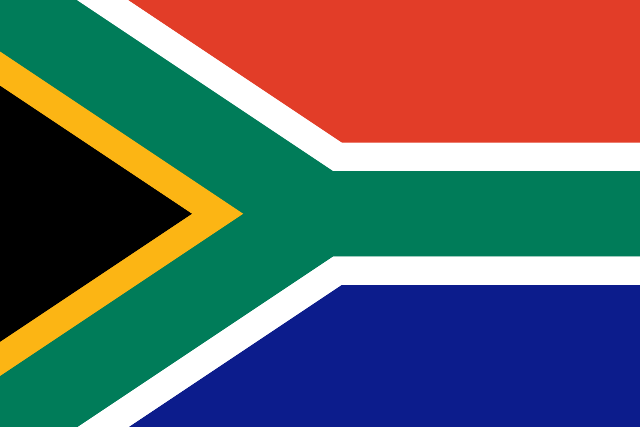
Sudan
Three stripes in red, white and black mark the flag of Sudan. Red stands for the people’s struggle for freedom in Sudan and Arabia. White symbolizes peace, but also brightness and love. Black stands for the Mahdi Revolution, here black on the flags was a distinguishing mark. The green triangle on the left represents agriculture and prosperity.
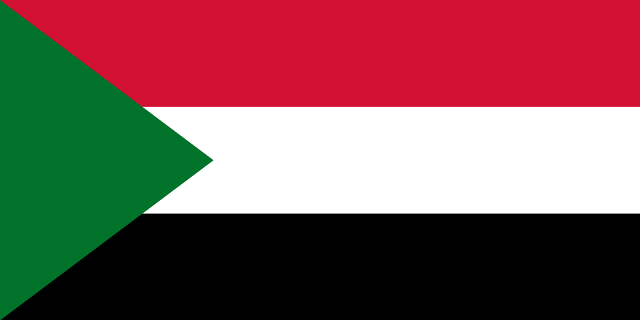
South Sudan
Today’s flag of South Sudan was originally the flag of the Sudanese People’s Liberation Army. It only became the national flag when the country gained independence from Sudan on July 9, 2011. The flag of Kenya probably served as a model. Black stands for the population, white for peace and red for the blood of all those who fought for a free South Sudan. Green stands for agriculture and blue for the important river Nile. The star on the blue triangle symbolizes the unity of the country.
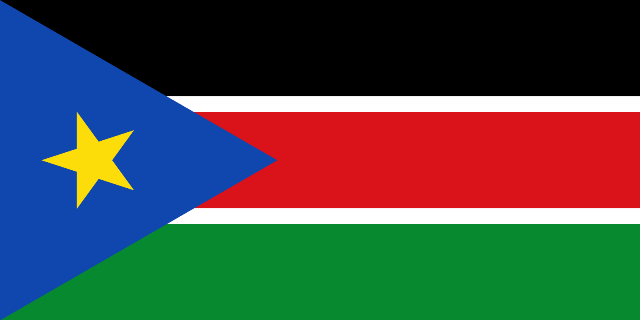
Tanzania
The green color symbolizes the agriculture of the country. Black stands for the skin color of the people and yellow for the natural resources of Tanzania. Blue denotes the sea.

Togo
The colors red, yellow and green stand for a united Africa and the solidarity of all black people. They are therefore called the pan-African colors ( pan means “everything, whole, whole”). In the case of Togo, green stands for hope and agriculture, yellow for faith in work and mining, and red for charity and loyalty. The white star stands for purity. The five stripes symbolize not only the five regions of the country, but also the five fingers of a hand and thus also energy.

Chad
The flag of Chad is striped in blue, yellow, and red. Blue represents the sky and hope. Yellow is a symbol of the desert and the sun. Red stands for progress.
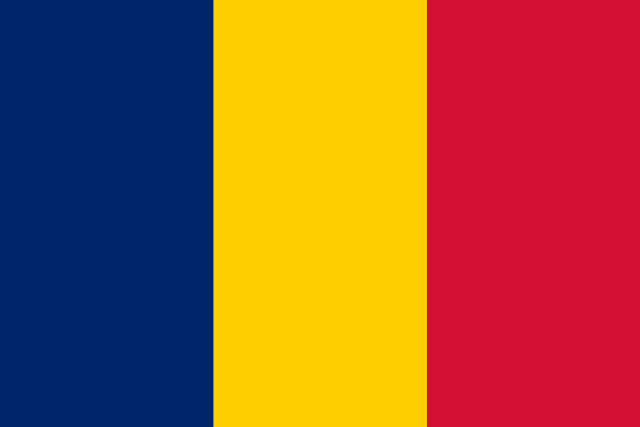
Tunisia
The crescent moon and the star enclosed by the crescent moon stand for Islam, the most important religion in Tunisia. But they should also bring luck at the same time. Red also stood as a symbol for the Ottoman Empire and Tunisia was once a part of it, as the red color refers to.

Uganda
Black stands for the African continent and the people who live on it. Yellow is the sun and also denotes the location of Uganda on both sides of the equator. Red stands for the brotherhood of the people and the crowned crane in the middle of the flag is also Uganda’s heraldic animal.
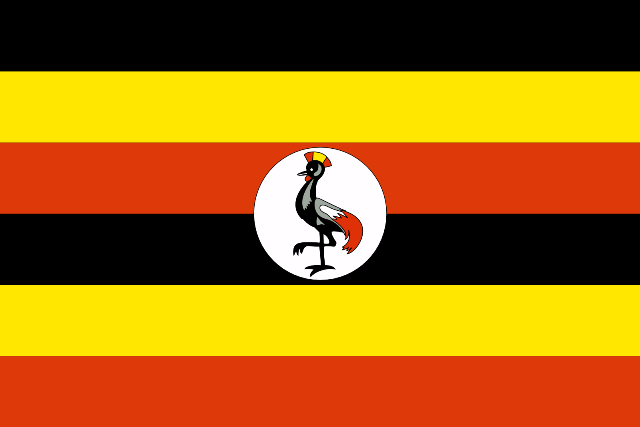
Central African Republic
The flag of the Central African Republic combines the colors of the former colonial power France (white, red and blue) with the colors of Africa (green, yellow and red). The red ribbon unites both. The gold star stands for the country’s independence.
